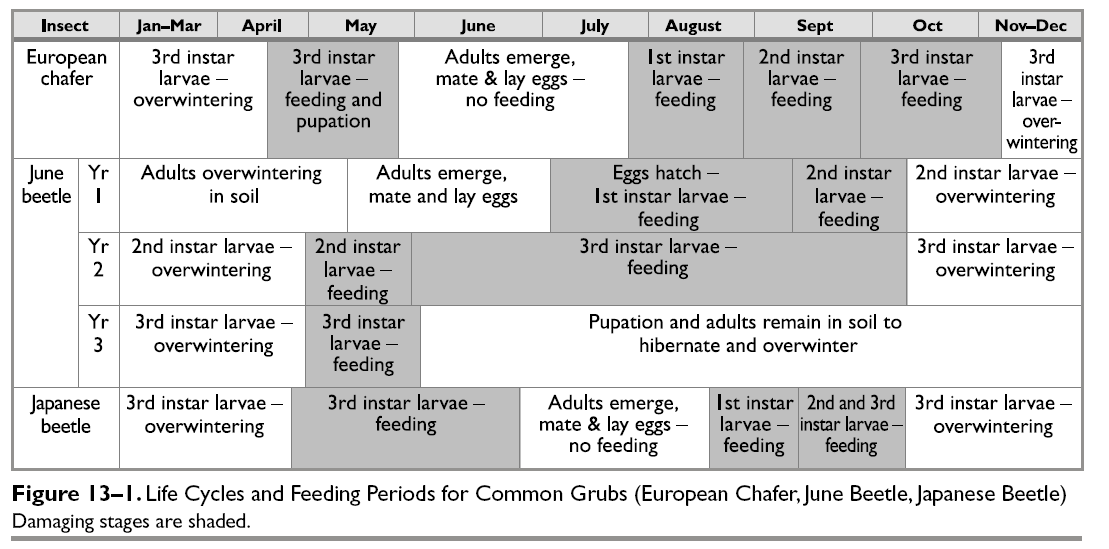Despite all this rain, pests are still doing quite well out there, as long as they have something to eat. We had a lot of snow cover this winter which has helped insulate any insects that overwinter and the cool wet soils are helping these soil pests remain active. Some are just waiting for their main food source to be planted, while others are taking advantage of what has already gone in.
Grubs: Grubs have been active for quite some time this year. Fortunately for those who only have European chafer as their main grub problem, these grubs should be pupating and turning into adults very soon. So there shouldn’t be much more feeding by them this spring. Unfortunately, June beetle grubs if in their second or third year, or Japanese beetle grubs will be quite active and are just waiting for crops to be planted if not in the ground already. Soybeans are at an increased risk when it comes to these two grubs since they feed later into the season. Best to plant crops in good soil conditions so the seeds sprout out of the ground quickly and can avoid significant feeding. Even if seed treatments have been used, in heavy populations, feeding damage can still occur since these grubs need to take a bite to be killed by the product. Corn coming up with gaps in the stand may be due to these guys.
Here is an illustration to help explain the lifecycles and main feeding times for these grubs (Source: OMAFRA Publication 811, Agronomy Guide for Field Crops):
Click on diagram to enlarge
Slugs: These guys are LOVING this weather. Some may have drown in those fields that have been underwater but many are quite delighted by this spring. If you have had slug issues in the past, expect to have the same problem areas again this year, if not worse. Especially if you decide to plant a more susceptible crop like soybeans instead of corn like originally planned. This week is the perfect time for those who have small patches of problem areas and are willing to invest in the slug bait SLUGGO. May 24 is a good rule of thumb for slug bait timing. But the product is not cheap so you only want to apply it in those small problem patches in the field using a hand fertilizer spreader to scatter the bait on the ground. But again, this product is too expensive to use on a larger scale in field crops. Growers with slug problems are encouraged to be patient and wait till the soil is fit enough to lightly till to help kill some of these slugs and plant in ideal soil conditions to get the crop to pop out of the ground quickly.
Wireworms: A few reps have stopped by the office this week to complain about wireworm infestations. Wireworms seem to be thriving as well and this insect can last in the soil as larvae for up to 6 years. They stay close to the soil surface until summer temps and sunny days start to heat up the soil and make it uncomfortable for them. But they haven’t had that problem yet. The issue with wireworms is that research is indicating that the neonicotinoid seed treatments really only stun the wireworms and stop them from feeding. They don’t necessarily kill off the population so you continue to have the infestations year after year. In heavier infestations, several larvae may take a bite out of the same small seedling planting, giving the plant no chance of recovering. Consider using higher rate seed treatments this year in those fields known to have higher infestations of wireworms. Like the other pests mentioned, plant in ideal soil conditions so that the seedlings have an easier time growing quickly and avoiding significant feeding.
This spring is teaching us all some patience. If we push too hard and rush crops into unfit soils, we are just giving these pests the upper hand.
